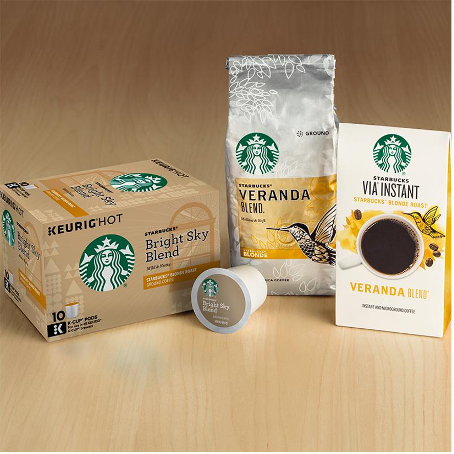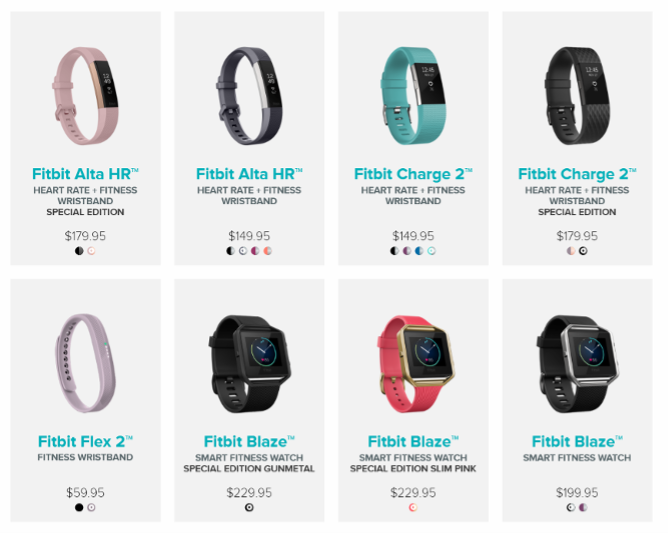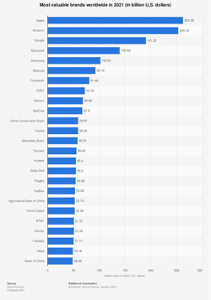Brand Success FAQ
Brand success is vital in today’s competitive market.
If you want to be the most successful brand in your niche, you need to cultivate a brand that resonates with your target audience.
But what is the secret to brand success? And how do you build a successful brand?
Discover the answer to those and many more as the Loomly Team answers all your questions in this brand success FAQ.
TABLE OF CONTENTS
- What does brand success mean?
- What are the four branding strategies?
- What makes a brand successful?
- What are the five elements of a successful brand?
- What are the most successful brands in the world?
- What are the outcomes of brand success?
- What is the secret to brand success?
- How do you build a successful brand?
- What are the steps of a successful brand building process?
- What is the best brand success tool?
What does brand success mean?
Brand success is the comprehensive set of processes, workflows, and tools that marketing teams use to manage, nurture, and amplify their communication.
The approach includes, but is not limited to, the following aspects of brand management:
- Brand asset management
- Brand storytelling
- Brand message control
- Branded content optimization
- Audience reach
- Community and reputation management
- Brand performance
What are the four branding strategies?
The 4 types of brand strategies are line extension, brand extension, new brand strategy, and flanker/fight brand strategy.
Line Extension Brand Strategy involves creating additional products in response to consumer needs. For example, Apple introduced the iPhone 6 Plus to satisfy consumers who wanted a larger screen.
Brand Extension Brand Strategy involves introducing a new brand, in a new market, after consolidating your brand’s name in a related field. For example, Starbucks introduced its K-Cups for coffee drinkers who wish to enjoy the benefits of Starbucks gourmet coffee at home or in the office.

New Brand, Brand Strategy is used when a firm creates a new brand to go alongside a new product. For example, Frito Lay has created many different salty snacks under various brand names, including Doritos and Cheetos.
Flanker Brand Strategy is the placement of a new brand or sub-brand at the higher or lower ends of the spectrum to capture new market segments. For example, Fitbit offers an array of different step trackers at different prices. The Fitbit Flex is at the lower end of the spectrum with the lowest cost and, as expected, the least features.

Fighter Brand Strategy occurs when a firm creates a new brand to wrest market share from another. Usually, fighter brands are created to target competitors rather than consumers. For example, Coca-Cola created Citra to compete with Squirt, the grapefruit soft drink owned by Dr. Pepper.
What makes a brand successful?
A brand is the world’s perception of who a company is and what it does. (It’s not the name, logo, or mission statement.)
Everything that your organization says or does contributes towards this perception, whether you intend it to or not.
If you know what you want to be known for, you can build a successful brand by shaping your actions and communications to point towards a desired interpretation.
For example, the Apple brand didn’t become successful by chance. It has been carefully considered and executed, so that every aspect of the company is unified in leading the customer towards a designated conclusion.
If your brand is successful, it will:
- Plainly show who your company is and why you’re different from the competition.
- Have a distinctive personality that is appropriate for your target audience.
- Be consistent in its messaging and design, reinforcing the position, promise, and personality at each touchpoint.
- Demonstrate the value that your company provides for the customer and how that value is created.
- Change with the times – a successful brand doesn’t stand still.
What are the five elements of a successful brand?
The five elements of a successful brand are:
- Brand position: The description of what your organization does, whom it caters to, what your unique values are, what differentiates you from other companies, and what the consumer can gain by using your product or service.
- Brand promise: The single most important thing that your organization promises to deliver every single time.
- Brand personality: The traits that illustrate what your brand should be known for within and outside the organization.
- Brand story: The history of your organization, plus how it adds credibility, shapes the face of and lends value to your brand, including your products and services.
- Brand associations: The physical artifacts that make up your brand, including your logo, name, colors, fonts, image, and tagline.
What are the most successful brands in the world?
As of 2021, Apple was the most valuable brand in the world, with an estimated brand value of about USD 263.4 billion. The second leading brand was Amazon (most valuable last year), which had a brand value of around USD 254.2 billion.

What are the outcomes of brand success?
The five tangible outcomes of brand success are:
- The Impact on Employees: Understanding/Inspiration/Satisfaction/Referral to peers.
- Customer Loyalty: Satisfaction ratings/intent to purchase (index rating)/referral source.
- Competitive Differentiation: Yearly competitive Brand Power rating including awareness/consideration/preference/buying intent.
- Infrastructure Contribution: Reduction of budget waste due to meaningless marketing activities (such as unnecessary brand investments or misaligned corporate architecture/support).
- Stakeholder Confidence or Economic Value: Stock valuation and brand contribution/valuation model.
What is the secret to brand success?
The five secrets to brand success are:
- Find out how much involvement consumers actually want by actively engaging in participation marketing.
- Recognize the increasing importance of design by crafting well-designed products and services.
- Assume integration is the norm by developing fully integrated channel and communication strategies.
- Practice social responsibility by embracing enlightened corporate social responsibility.
- Brand architecture needs to be comprehensive by designing and implementing a robust brand architecture strategy.
How do you build a successful brand?
You can build a successful brand by following these five steps:
- Ensure brand consistency by delivering a clear message frequently.
- Tell an inspiring story that evokes emotions in your audience.
- Reach your audience effectively by highlighting and targeting your key demographic.
- Manage your reputation by addressing negative interactions effectively,
- Measure your performance with data to drive your decision making.
1. Ensure brand consistency
Your brand is built on three pillars:
- Credibility: are you the real deal?
- Integrity: are you trustworthy?
- Resonance: do people like you, do things like this?
Each of these pillars is constructed, over time, through consistency. And we mean consistency in every sense of the word:
- You must consistently share content with your audience.
- Your content must contain a consistent
- Your content must consist of high-quality material.
For example, Shopify has cultivated a strong brand for creative entrepreneurs.
2. Tell an inspiring brand story
Customers buy expensive cars, drink artisanal coffee, queue for the latest iPhone, run in $200 shoes and write with Mont Blanc pens.
Why?
Because they rely on their emotions to make decisions.
They want to be inspired, confirm their status, join a tribe, pick a side, and show the world who they think they are.
It’s easy to think the word “inspire” means the motivational rush you get by reading Instagram quotes. But inspiration really means evoking a strong feeling or emotion in a person.
For example, a brand that “inspires” in this way is Chubbies.
3. Reach your audience effectively
The next piece of the puzzle is ensuring the correct people see your brand.
There are:
- One hundred million brands in the world.
- Five hundred million tweets published every day.
- Ten thousand brand messages exposed to consumers on average every day.
So, it’s safe to say that the competition for attention is fierce.
Thankfully, having a strong brand means it’s not a case of who shouts the loudest, but who is the most deliberate in what they say (and who they say it to).
To be effective in this, you need to grow and nurture an engaged audience who has permitted you to send them a brand message. For example, it could be via:
- Social media follows.
- Signing up to your mailing list.
- Joining your community forum.
Whichever is most relevant to your business.
The key to gaining this permission – and growing your audience – is to be specific in who you want to target.
For example, we could guess that:
- For Shopify, it would be physical product-focused, single-person or small-team businesses, between the ages of 25 and 40.
- For Chubbies, it would be US-based males in 9-to-5 jobs, over the age of 25, who have played team sports or been part of a college fraternity.
4. Manage your reputation
Once you have connected with the right people, it’s time to monitor what they say about your brand.
Nowadays, everyone’s an influencer.
But this influence applies to both positive and negative interactions.
Reputation management comes down to being aware of the current conversation around your brand and intervening where necessary.
If you address negative interactions effectively, you can improve your reputation more than the negative comment could ever damage it.
5. Measure your performance
Your brand success will ultimately be decided by how you respond to data.
Being able to track performance, measure ROI, and use the data to make consistent data-driven adjustments is paramount to your strategy.
You need to be continually testing and tracking the impact of the previous four steps on your audience using analytics data. And then adjusting and improving accordingly to ensure your brand’s longevity.
What are the steps of a successful brand building process?
Follow these eleven steps for a successful brand building process:
- Discover the purpose behind your brand.
- Research competitor brands within your industry.
- Determine your brand’s target audience.
- Establish a brand mission statement.
- Outline the key qualities and benefits your brand offers.
- Form your unique brand voice.
- Let your brand personality shine.
- Build a brand story and messaging.
- Create a brand logo and tagline.
- Integrate your brand into every aspect of your business.
- Stay true to your brand building.
What is the best brand success tool?
Loomly is the Brand Success Platform that helps marketing teams streamline collaboration and build successful brands online.

Manage all your social media accounts in one place.
Craft, schedule, & auto-post content to all your social channels, then track analytics and manage interactions from a single, easy-to-use dashboard.
Brand Success in a Nutshell
Brand success is vital in today’s competitive market.
If you want to stand out and become the go-to brand in your industry, you need to cultivate a brand that resonates with your target audience.
Follow the tips in this FAQ guide, and you will be well on your way to achieving brand success.
Better still:



